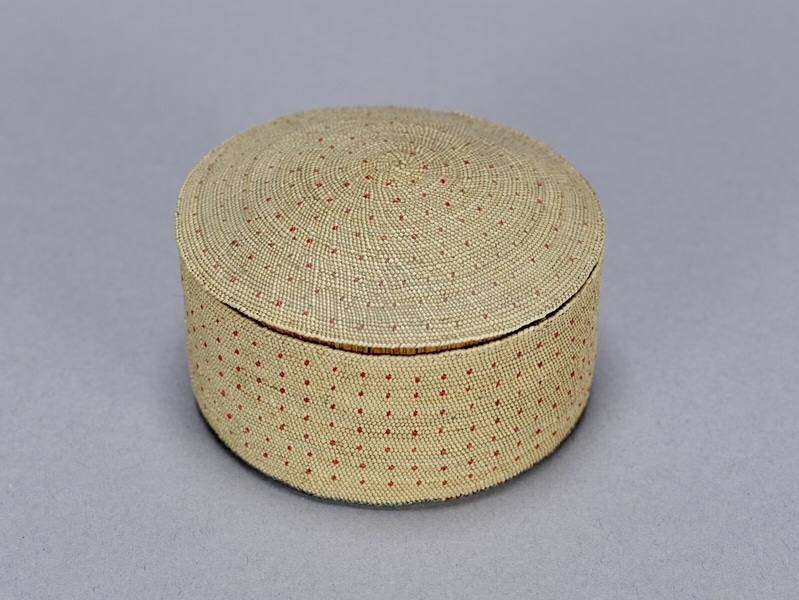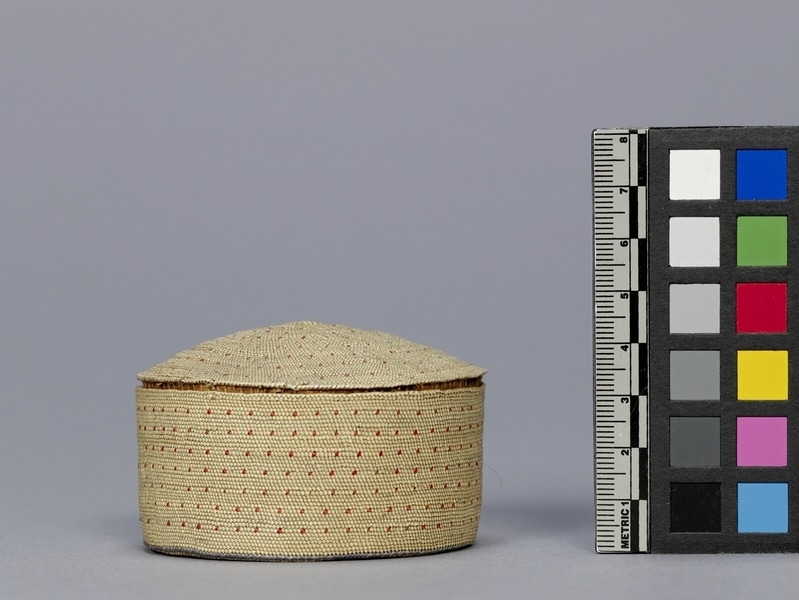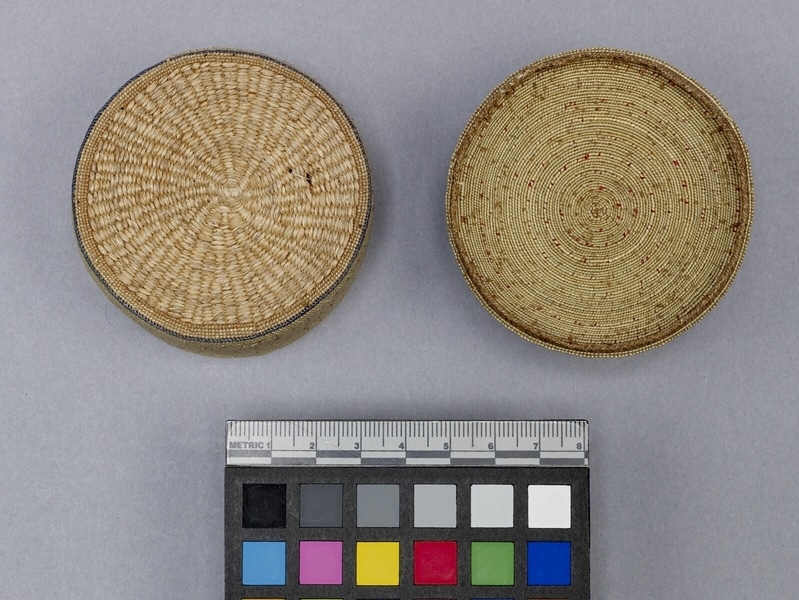Basket Item Number: Na727 a-b from the MOA: University of British Columbia



Description
Round, closed two-strand twined basket with lid. Straight-sided, very finely woven. Approximately every 6th element in every 6th row is red (warp of same grass dyed red, otherwise yellow-green). Bottom of basket is coarser and darker red/beige. Blue band, a single element wide around bottom edge. Lid (b) rim is reinforced by cedar bark band. Red 'dot' pattern on lid, same as basket. Two small holes near bottom centre.
History Of Use
Small trinket baskets were produced primarily for sale. Based on traditional techniques, Aleut grass baskets are among the finest weaves known. These baskets became highly prized trade items, with trade production and quality peaking from the mid-19th to the early 20th centuries. Finely woven baskets represent a considerable investment of time (months of spare time work). Traditionally, baskets were made in the winter from materials collected and prepared during the summer and fall.
Cultural Context
made for sale
Narrative
Dune grass is commonly referred to as wild barley or wild rye.
Item History
- Made in Alaska, USA
- Collected during 1900
- Owned by Dorothy Ladner and Edna Ladner before April 12, 1976
- Received from Dorothy Ladner (Donor) and Edna Ladner (Donor) on April 12, 1976
What
- Name
- Basket
- Identification Number
- Na727 a-b
- Type of Item
- basket
- Material
- grass, dye and cedar bark
- Manufacturing Technique
- twined
- Overall
- height 4.3 cm, diameter 7.0 cm
Who
- Culture
- Aleut
- Previous Owner
- Dorothy Ladner and Edna Ladner
- Received from
- Dorothy Ladner (Donor) and Edna Ladner (Donor)
Where
- Holding Institution
- MOA: University of British Columbia
- Made in
- Alaska, USA
When
- Collection Date
- during 1900
- Ownership Date
- before April 12, 1976
- Acquisition Date
- on April 12, 1976
Other
- Item Classes
- basketry
- Condition
- good
- Current Location
- Case 48
- Accession Number
- 0299/0038